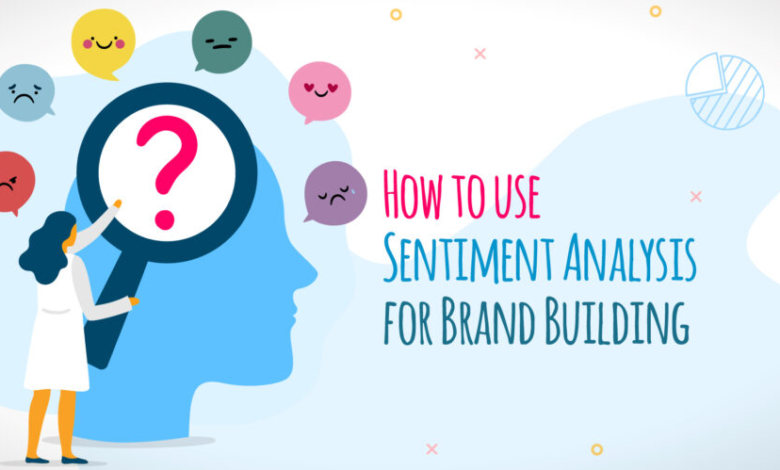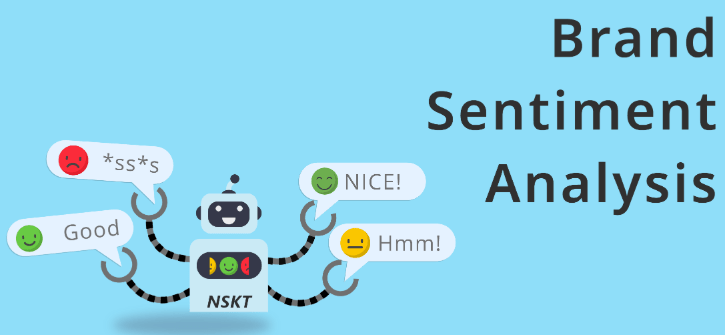Brand sentiment, definition and methods of analysis, data collection for optimal efficiency

Brand sentiment refers to the emotional tone or attitude that consumers express toward a brand. It reflects how people feel about a brand—whether positively, negatively, or neutrally—and is crucial for understanding brand perception and reputation. Analyzing brand sentiment helps brands gauge public opinion, identify potential issues, and improve their marketing strategies.

Definition of Brand Sentiment:
Brand sentiment is the measure of the emotional response or opinion that consumers have about a brand. It can be positive, negative, or neutral and is often derived from analyzing customer feedback, social media mentions, reviews, and other forms of public commentary. Sentiment analysis helps brands understand how their audience perceives them and how this perception influences their overall reputation.

Methods of Analysis for Brand Sentiment:
1. Text Analysis and Natural Language Processing (NLP):
- Overview: Use advanced text analysis techniques to process and analyze written content, identifying the sentiment expressed in customer reviews, social media posts, and other textual data.
- Techniques:
- Sentiment Scoring: Assign scores to words or phrases to determine the overall sentiment of a text. Tools like sentiment lexicons can be used.
- Entity Recognition: Identify mentions of specific brands or products within texts to assess sentiment related to those entities.
- Machine Learning Models: Implement machine learning algorithms trained to classify text into sentiment categories (positive, negative, neutral).
2. Social Media Monitoring:
- Overview: Track and analyze social media mentions, comments, and discussions to understand public sentiment about the brand.
- Techniques:
- Sentiment Analysis Tools: Use tools like Brandwatch, Hootsuite, or Sprout Social to analyze social media content and categorize sentiment.
- Trend Analysis: Identify trends and patterns in sentiment over time to gauge the impact of marketing campaigns, product launches, or other events.
3. Customer Feedback and Reviews:
- Overview: Analyze feedback from customer surveys, reviews, and ratings to assess sentiment related to the brand’s products or services.
- Techniques:
- Review Aggregation: Collect and aggregate reviews from platforms like Google, Yelp, and Trustpilot.
- Rating Analysis: Analyze star ratings and review comments to determine overall sentiment and identify specific issues or strengths.
4. Surveys and Polls:
- Overview: Conduct surveys and polls to directly gather opinions and sentiments from customers about the brand.
- Techniques:
- Sentiment Questions: Include questions designed to gauge customer feelings about the brand, such as Likert scale questions on satisfaction and perception.
- Open-Ended Responses: Analyze open-ended survey responses for detailed insights into customer sentiment.
5. Content Analysis:
- Overview: Review and analyze content related to the brand, including news articles, blogs, and forums, to understand public sentiment.
- Techniques:
- Sentiment Coding: Manually or automatically code content based on its sentiment.
- Volume and Impact: Assess the volume of positive vs. negative mentions and their impact on brand perception.
Methods of Data Collection for Optimal Efficiency:
1. Automated Sentiment Analysis Tools:
- Overview: Use automated tools and platforms to streamline the collection and analysis of sentiment data.
- Tools: Platforms like Lexalytics, Sentiment140, and Google Cloud Natural Language API provide automated sentiment analysis capabilities.
2. Social Media Monitoring Platforms:
- Overview: Employ social media monitoring tools to gather and analyze data from various social media channels.
- Platforms: Tools like Brandwatch, Mention, and Talkwalker can help track brand mentions and sentiment across multiple platforms.
3. Review Aggregation Services:
- Overview: Use services that aggregate customer reviews and feedback from various sources.
- Services: Platforms like ReviewTrackers and Trustpilot can help collect and analyze customer reviews for sentiment insights.
4. Survey and Feedback Tools:
- Overview: Utilize survey and feedback tools to collect direct input from customers.
- Tools: Services like SurveyMonkey, Qualtrics, and Typeform can be used to design and distribute surveys and collect sentiment data.
5. Custom Analytics Solutions:
- Overview: Develop custom analytics solutions tailored to specific needs and data sources.
- Approach: Implement custom algorithms and data pipelines for analyzing sentiment in ways that align with the brand’s objectives and data sources.
Steps for Optimizing Brand Sentiment Analysis:
- Define Objectives: Determine what aspects of brand sentiment you want to measure (e.g., overall perception, response to specific campaigns).
- Select Metrics and Tools: Choose appropriate sentiment analysis metrics and tools based on your objectives and data sources.
- Collect Data: Gather data from various sources, including social media, customer reviews, surveys, and content analysis.
- Analyze Sentiment: Use text analysis, machine learning, and sentiment scoring techniques to analyze the collected data.
- Interpret Results: Interpret the sentiment data to understand public perception, identify trends, and uncover actionable insights.
- Implement Strategies: Develop and implement strategies to address negative sentiment, enhance positive sentiment, and improve overall brand perception.
- Monitor and Adjust: Continuously monitor sentiment and adjust strategies as needed based on ongoing analysis and feedback.
Conclusion:
Effective brand sentiment analysis involves understanding the emotional tone of customer interactions and feedback. By employing a combination of automated tools, social media monitoring, and direct customer feedback, brands can gain valuable insights into public perception, enhance their reputation, and make data-driven decisions to improve customer relationships and brand performance.

